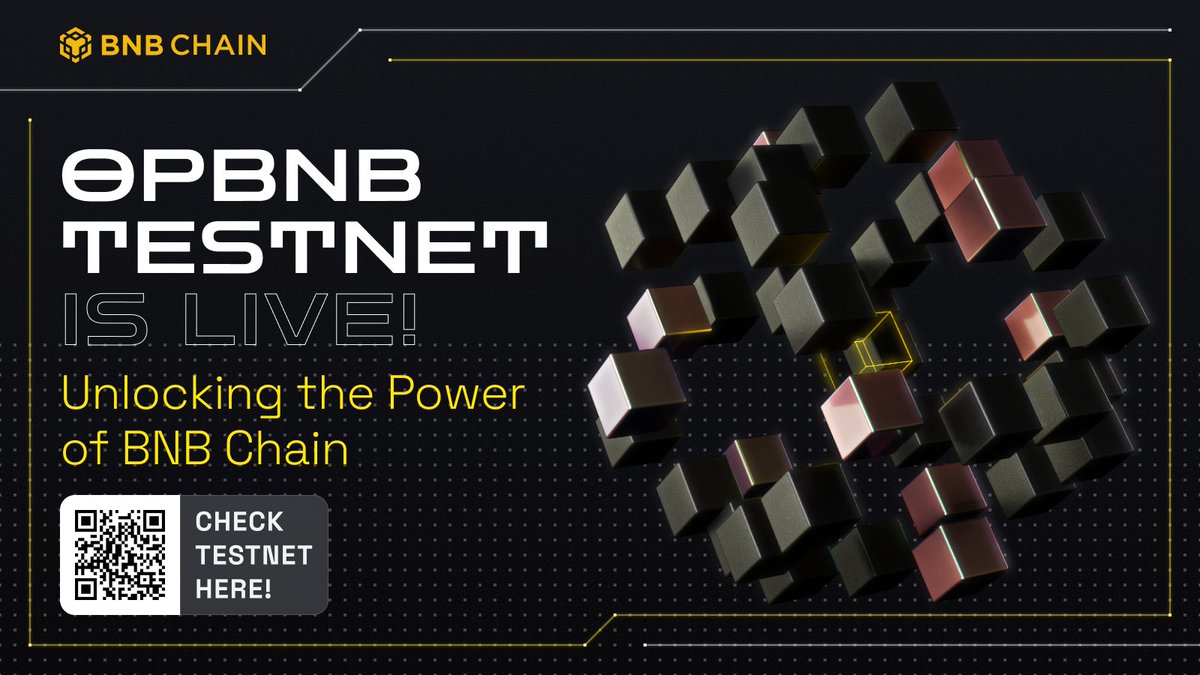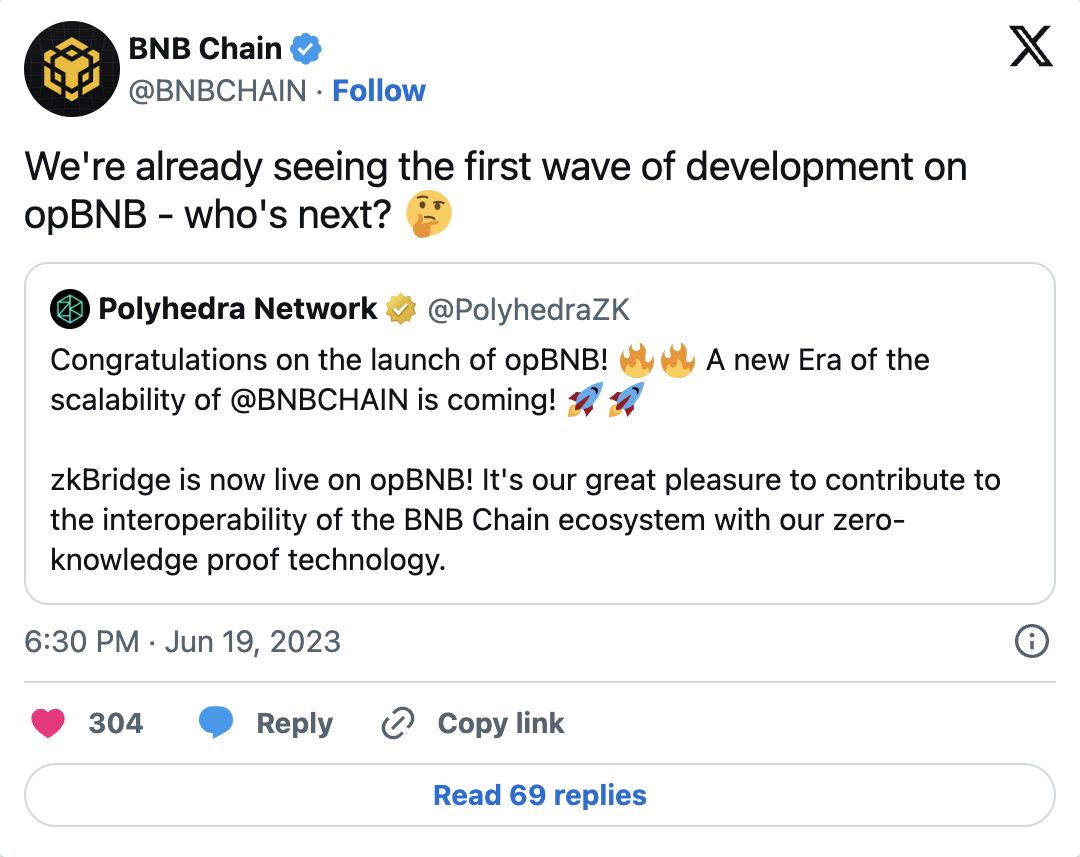BNB Chain, established by Binance, introduced a new Layer-2 network aimed at solving scalability issues. BNB Chain launched opBNB as a test network, based on the Optimism OP Stack, which is expected to add security and scalability to the Binance blockchain network. The system is compatible with the Ethereum Virtual Machine (EVM).
Significant Step by the BNB Chain Team
Blockchain networks often face congestion and high fees during periods of increased network demand. BNB Chain currently processes approximately 2,000 transactions per second with transaction costs around $0.10. According to the announcement, opBNB can support over 4,000 transactions per second with an average transaction cost of less than $0.005.

Additionally, opBNB allows for the optimization of data accessibility, a cache layer, and the adjustment of the submission process algorithm to permit concurrent transactions. This enables the gas limit per block to increase from 30 million, as allowed by Optimism, to 100 million.
Binance described opBNB as a response to the scalability issue that limits the mass adoption of blockchain technology. Additionally, it was noted that the RPC (remote procedure call) service layer simplifies the integration process by offering a user-friendly interface. This allows developers to focus on building applications without worrying about the complexities of Layer-2 scaling.

Details on the Subject
Adam Cochran, a partner at Cinneamhain Ventures, was among those skeptical of the development, stating that BNB Chain faced scaling issues due to centralizing an Ethereum fork and raising the gas limit to an unsafe level. He added that launching an Optimism fork made no sense given other options like joining Optimism as a superchain, being a Layer-2 network directly on Ethereum, or even being a Layer-3 on Optimism or Arbitrum.
According to DefiLlama, BNB Chain is the third-largest blockchain network in terms of total value locked in DeFi, following Ethereum and Tron. It has a TVL value of $3.38 billion, a 24-hour volume of $264 million, and approximately one million active daily users.

 Türkçe
Türkçe Español
Español










